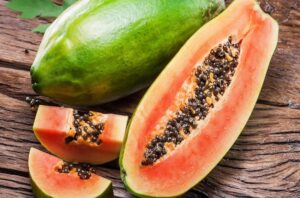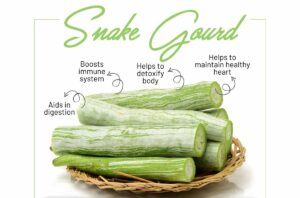Due to its awkward form and size, banana squash may not be as well-known as its winter squash relatives, such as the acorn and butternut squash. The aroma of roasted banana squash drifting from the oven is what the devotees of this squash type swear by, despite the fact that the squash’s size may turn some people off. Similar to other squashes, banana squash is nutrient-rich and tastes great when combined simply with butter and flavored with cinnamon or nutmeg.
Don’t pass it up if you see it at the grocery or your neighborhood farmer’s market. Here’s additional information on this lesser-known squash type that often becomes available in the fall and winter.
read also: salsa Faits nutritionnels et Bienfaits pour la santé
What is Banana Squash?
Winter squashes include banana squash, which are first and foremost notable for their enormous size. They may weigh up to 35 pounds, grow to a length of two to three feet, and have a relatively small diameter of about six inches.
The rectangular shape and light, creamy yellow skin of banana squash—which also comes in bright pink and striped forms known as rainbow types—are what give it its name rather than its enormous size.
You may now begin to comprehend why you seldom ever see a full one of them at the grocery store when you visualize a 3-foot, 30-pound squash. They take up too much room, for starters. And second, veggies that appear as though they could just as easily devour you as the other way around terrify most buyers.
As a result, banana squash in the grocery store is typically divided into smaller pieces with the seeds and interior pulp removed.
read also: spermidine : bienfaits et effets secondaires
Nutrition Facts
Banana squash is a great source of beta-carotene, which is a precursor to vitamin A, vitamin C, and vitamin B6. Additionally, it is an excellent source of fiber, magnesium, and potassium. All varieties of winter squash are excellent low-calorie, nutrient-rich foods. 9.9 grams of carbs, 1.1 grams of protein, and 39.4 calories are found in one cup of cubed squash (116 g).
Health Benefits
There are no particular studies on banana squash, however, because of their nutritional composition, winter squashes have long been believed to improve general health. Squashes are a hearty, satisfying dish that is low in calories and glycemic load. You may manage your weight and lower your chance of developing diabetes, heart disease, and other chronic diseases by including squash in your regular diet.
read also: Rice Milk Nutrition Facts and Health Benefits
How To Cook Banana Squash?
Because of its versatility, banana squash pairs nicely with the majority of fresh herbs, such as sage, rosemary, or thyme. It can be served as a straightforward side dish and baked, roasted, or fried. In the fall and winter, roasted squash also makes a fantastic warm salad. Here is how to prepare this type of squash for cooking step-by-step.
How To Cut Banana Squash?
- Slice the squash in half and place it on the chopping board. Its tough skin necessitates the use of a keen knife. It is advisable to wrap the squash in a towel and thwack it hard on the ground to break it into manageable pieces if it is particularly large (above 35 pounds).
- Throw away the seeds. You may roast the seeds and consume them if you like. Slice the halves of the sections thickly. These slices can now be roasted entirely.
- Slice the squash further into bite-sized pieces for cubed squash pieces. The cubes can also be microwaved for 7 to 10 minutes with the skin down. The skin is removed and just the meat is consumed.
What Does It Taste Like?
Like butternut squash, banana squash has a sweet, unassuming taste. It may be used in any dish that asks for a winter squash with orange flesh, including butternut, acorn, and kabocha. Along with herbs like rosemary, thyme, and sage, as well as spices like cumin, cinnamon, cloves, curry powder, and nutmeg, it goes well with pork, lamb, and apricots.
Banana Squash Recipes
Butternut or other winter squash may easily be used in place of banana squash in recipes. Try these squash dishes with banana squash:
- Winter Squash Soup
- Roasted Butternut Squash with Sage
- Spicy Butternut Squash Risotto
Where to Buy Banana Squash Although banana squash is commonly accessible year-round at most grocery shops, you’re most likely to find it during the fall and winter, when demand is at its highest.
Storage
Banana squash is precut because of its size, so you may store the cut pieces, which should be firmly wrapped, for up to five days in the refrigerator. It will survive up to a month if you store a whole one in a cold, dry spot if you manage to get your hands on one, perhaps at a farmers market.

